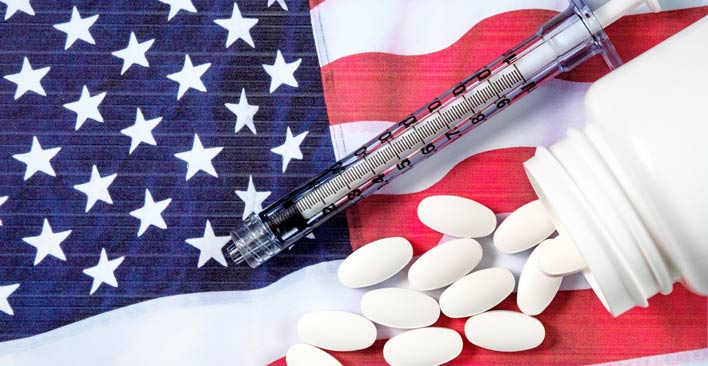Many accident injury victims must undergo extensive rehabilitation and physical therapy. The American Physical Therapy Association (APTA) is a professional organization representing hundreds of thousands of U.S. physical therapists, assistants, and students. They celebrated National Physical Therapy Month in October. TorkLaw congratulates an initiative launched by APTA to combat the opioid crisis in the United States.
In response to the opioid epidemic in the United States, APTA launched the #ChoosePT campaign to raise awareness of physical therapy as an effective alternative to opioids for pain management.
Benefits and Drawbacks of Opioids
Prescription opioids may be appropriate pain medication for certain illnesses or injuries. For example, cancer patients or those with other acute conditions. Opioids are useful for palliative or end-of-life care.
However, in its 2016 Guideline for Prescribing Opioids for Chronic Pain, the Centers for Disease Control and Prevention (CDC) recommends that physicians reduce the use of opioids in favor of safer alternatives, like physical therapy. When opioids are considered, the CDC recommends that clinicians carefully balance the risks against the expected benefits, given the patient’s medical history.
The serious risks of opioid use include:
- Addiction
- Depression
- Anxiety
- Liver damage
- Brain damage
- Sleep apnea
- Gastrointestinal problems
- Impotence
- Tooth decay
Of course, the greatest risk is death by opioid overdose.
The American Journal of Psychiatry reports that in 2015, there were more than 33,000 unintentional opioid overdose deaths in the United States. The 2015 National Survey on Drug Use and Health estimated that two million people aged 12 or older had an opioid use problem.
Possibly the most telling statistic is that more than 60% of those who died from an opioid overdose suffered from chronic pain.

U.S. Healthcare System’s Addiction to Pharma
Since the mid-1990s the U.S. health care system’s approach to pain management has been to mask pain with pharmaceuticals, rather than diagnosing and treating the actual cause. This opioid-centric strategy has proven disastrous, to say the least.
When opioid use masks a patient’s pain, it can also mask important symptoms that may signal a more severe problem that needs different treatment. This can delay the healing of the actual injury, and create an even bigger problem, such as the risks mentioned above.
A Washington Post-Kaiser Family Foundation survey found that one-third of long-term prescription opioid users become addicted. More than 60 percent said that their doctors did not provide them with any advice on how or when to stop taking opioids. 20 percent said their doctors didn’t provide enough information about the risk of side effects like addiction.
Opioids Often Not the Best Pain Management Solution
When pain lasts more than 90 days, it is considered “chronic.” Around 116 million Americans have chronic pain each year. These people are at a greater risk of opioid addiction. The CDC guidelines note that clinicians should not consider opioids as a first choice or routine approach for chronic pain.
The CDC cites evidence that opioids are not even that effective in treating problems like low back pain, hip or knee osteoarthritis, or fibromyalgia. These conditions actually respond better to a physical therapy treatment plan.

A JAMA Internal Medicine analysis found that opioids provide only modest, short-term pain relief for lower back pain, and no benefit at all in terms of long-term relief. For some knee injuries, physical therapy may even work better than surgery.
This is because physical therapy treats pain with a more comprehensive approach. Physical therapists provide the patient with a partner in their recovery and pain management journey. They focus on educating patients and using hands-on care and movement to increase patients’ physical activity. These elements have a side benefit of reducing the risk of other chronic diseases and improving the person’s overall health.
The side effects of opioids can also delay recovery. Depression and anxiety, or problems sleeping and digesting food are all risks when taking opioids, and these can all impede progress for a recovering patient.
And the fact is, most Americans prefer a non-drug, non-opioid treatment for pain. Surveys show that 78 percent of adults in general prefer non-drug options to manage pain, while 79 percent of surgery patients want a non-opioid pain management option. Physical therapy is a safer, often more effective alternative.
Interested in #ChoosePT?
If you’re interested in joining the #ChoosePT campaign, go to APTA’s website for more information.
If you are suffering from a painful injury or medical condition, talk to your doctor about non-drug pain management options like physical therapy. Before deciding on a treatment option, make sure you have all the information about potential risks, side effects, and benefits. Make sure your doctor knows your complete medical history, and all current conditions, medications, and treatments. And remember that you always have the right to a second opinion, or to change physicians.
If your injury was caused by someone else, remember also that you may be entitled to compensation that can help pay for rehabilitative treatments like physical therapy. Contact the experienced personal injury attorneys at TorkLaw today.





